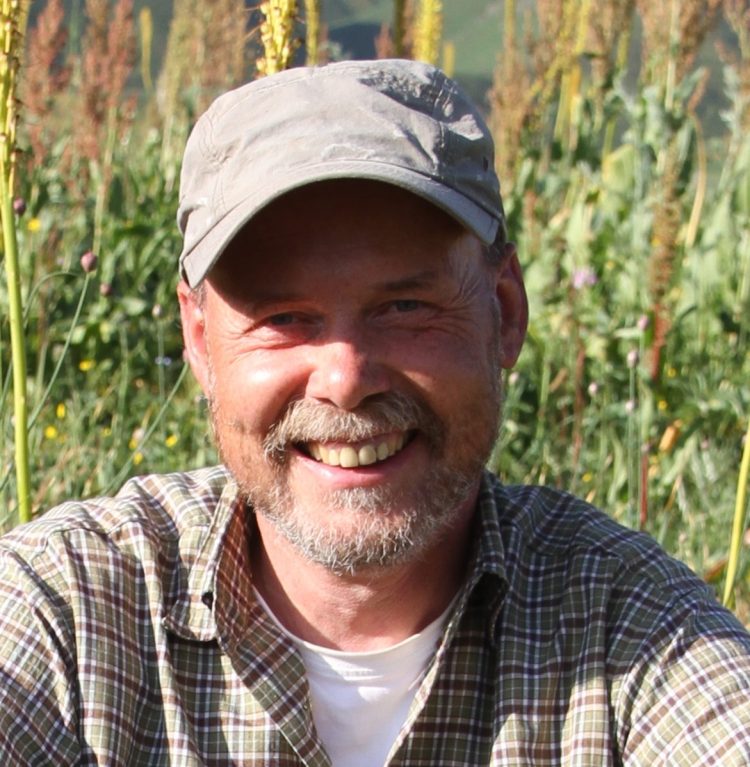
Principal Investigators
I am the head of the “Center for Innovative Biodiversity Discovery (CIBD).” Our center focuses on enhancing biodiversity research by creating new methods for expediting species discovery, description, and specimen identification. We achieve this acceleration by merging robotics, nanopore sequencing, and machine learning. In partnership with the Karlsruhe Institute of Technology, we have developed a biodiversity robot called “DiversityScanner” that captures images and transfers specimens into microplates. These specimens are then barcoded and allocated to putative species using DNA barcodes obtained with nanopore sequencers. The image data can then be utilized to train machine learning algorithms, thus enabling image-based specimen identification suitable for biologists and citizen scientists alike. The same workflow also generates voucher specimens for determining species abundances and interactions. Overall, the research carried out by CIBD research will thus help with safeguarding biodiversity, population monitoring, and ultimately, habitat preservation by facilitating rapid and low-cost specimen identification.
My research group uses using genomic and specimen-based methods to explore questions in evolutionary biology, community ecology, biogeography, and systematics. We have a particular focus on studying ants and other Hymenoptera, and explore biodiversity in understudied tropical habitats in Madagascar, mainland Africa, and Southeast Asia. Our projects focus on advancing understanding of the historical and contemporary evolutionary processes and patterns that have shaped insect diversity and distributions, and on improving insect systematics through integrative approaches that combine molecular, morphological and ecological data. Ultimately, our goal is to understand the processes that have contributed to insect diversity in both form and function, and enhance the collections at the Museum für Naturkunde, Berlin through field sampling and biodiversity discovery projects.
My research focuses on urban biodiversity, bioeconomy, biodiversity policy, and freshwater biodiversity in the West Palearctic region. I have a strong background in field ecology and conservation, and have coordinated the German Red List of freshwater fishes. Also I act as a Red List Authority and regional chair of the IUCN Freshwater Fish Specialist Group, being the contact point of national freshwater fish experts in 64 countries. Over the years, I have discovered and described more than 120 new species and genera of freshwater fish and build an almost complete COI barcode library for the about 1400 species of freshwater fishes known from North Africa, Europe, West and Central Asia. Overall, my goal is to enhance our understanding and conservation of freshwater ecosystems and their biodiversity.
My long-standing research on taxonomy, zoogeography and phylogenetic relationships of the speciose rove beetle clade Scopaeina (Coleoptera: Staphylinidae: Paederinae) has a current focus on the Palaearctic, Oriental and Australasian fauna. My goal is to identify new species based on genetic and morphological characters to gain a better understanding of the diversity, distribution and evolution of these riparian inhabitants of natural freshwaters banks. I aim to reveal insights into their evolutionary history and relationships with related rove beetle groups. Thus, I am investigating the palaeogeographical factors, which have influenced the distribution and diversification of the Scopaeina. Overall, my research aims to advance our knowledge of the remarkable insect life that inhabits our planet.
As a researcher in the field of systematics, my work focuses on developing and evaluating phylogenetic methods to reconstruct the historical relationships among organisms. This includes approaches that use molecular and morphological datasets, while also incorporating modern sources of information such as genomic and morphometric data, to infer the underlying patterns of speciation and diversification. Additionally, a major part of my work involves discovering new taxa by developing innovative methods for managing and updating taxonomic databases. This is crucial for ensuring that the vast amounts of data generated from molecular and morphological studies are accurately utilized, classified, and organized. Overall, my research aims to advance our understanding of the systematics of the tree of life, providing relevant information to preserve the incredible diversity of species on Earth.
My research focuses on studying ants through advanced technology such as microCT and 3D imaging. My primary objective is to identify and describe new ant species through morphological and molecular methods, contributing to our understanding of ant diversity and conservation efforts. I am also investigating ant morphology and evolution to better understand their physical characteristics and functional significance. Additionally, I’m researching the biogeography of ants to identify factors that contribute to their invasive potential and develop new strategies for managing invasive species. Overall, my research aims to advance our knowledge of ant taxonomy, morphology, biogeography, and biodiversity, while developing new techniques for studying and conserving these important insect species.
Coming from a research focus on phytopathology and global biodiversity informatics, my research interest has shifted to how scientists can contribute to a sustainable future. My framework for this is the “donut” concept, which links planetary boundaries (such as biodiversity loss, land use change, N+P cycles, or climate change) and human social goals. Specifically, I examine the role of science, scientists, and science communication. What are the social, political, and psychological factors driving or hindering the transition to sustainability? How are current crises, including the climate and biodiversity crisis, related and what are common causes and solutions? In February 2019, I initiated “Scientists for Future“ (S4F), a movement that provides scientific advice to the Fridays for Future movement. S4F is a non-institutional, non-partisan, interdisciplinary association of scientists committed to a sustainable future and to interdisciplinary and transdisciplinary science communication.
My research utilises cutting-edge molecular techniques to investigate the diversity and evolutionary relationships of hyperdiverse Diptera with a focus on the mega-genus Megaselia (Phoridae). Specifically, I am interested in developing and optimizing NGS barcoding and DNA barcoding protocols, as well as utilizing nanopore sequencing technologies, such as the MinION, to facilitate large-scale species discovery and delimitation. To achieve this, I employ integrative taxonomic approaches that incorporate morphological, ecological, and molecular data to robustly identify and describe species, as well as to infer their phylogenetic relationships. Ultimately, my research aims to provide a comprehensive understanding of the diversity, biogeography, and evolutionary history of these ecologically important organisms, and to inform effective conservation strategies in the face of ongoing biodiversity loss and global change.
I focus on advancing our understanding of the diversity and evolution of pyraloid moths, commonly known as snout moths. Through molecular and morphological methods, I study the taxonomy and diversity of these moths, with a strong focus on South-East Asia. At a larger scale, I investigate the phylogenetic relationships of pyraloid moths and reconstruct the evolution of morphological as well as ecological characters. I also develop new approaches to accelerate species discovery in insects based on museum collections. Finally, as curator of the Lepidoptera collection at the Museum für Naturkunde, I am deeply involved in the digitization and databasing of this large historical collection.
My research is focused on investigating the marine meiobenthic worms Kinorhyncha in order to understand the evolutionary relationships both within the group and to other taxa. Through the investigation of the morphology and systematics of these organisms as well as assessing their biogeographical patterns, I aim to contribute to our understanding of the amazing diversity of life on our planet. As a researcher in the field of biodiversity, my fascination with the diversity of life on our planet drives my research. I am committed to contributing to our collective understanding of the natural world and excited to continue exploring the evolutionary relationships of different invertebrate groups.
I have a keen interest in exploring the taxonomy, phylogeny, and evolution of two diverse groups – Hymenoptera and Neuropterida. My primary focus is on the global taxonomy and phylogeny of apoid wasps in the aculeate Hymenoptera, a highly diverse group of insects. Additionally, I am investigating the taxonomy and phylogeny of Mantispidae, a relatively small but understudied group of neuropterid insects. Apart from my empirical research, I am also interested in the theoretical and methodological foundations of biological systematics, with a special emphasis on taxonomy, and the history of biology. I believe that the conceptual framework in which we conduct empirical studies is equally important, and therefore, I strive to ensure that my research is grounded in strong theoretical and methodological foundations. My research aims to improve our understanding of the taxonomy, phylogeny, and evolution of these diverse groups of insects, which will contribute to a better understanding of global biodiversity.
My research focuses on understanding the evolutionary mechanisms underlying population divergence and speciation. I am broadly interested in the role of geography and the genome in shaping divergence and gene flow during the speciation process. Using a comparative approach, I study multiple hybrid zones between populations at different stages of speciation to get a broader perspective of the speciation process. The main themes of my research group include speciation, population genomics, biogeography, genome evolution, and hybridization. Additionally, my position at the CIBD focuses on molecular method development and optimization in museomics and high-throughput sequencing for various taxonomic groups. With this, we aim to leverage the genomic information locked in museum specimens for various research questions in taxonomy, ecology and evolution.
My research focuses on the biodiversity and evolution of insects, with a particular focus on parasitoid wasps, a hyperdiverse but underappreciated component of global biodiversity. My interests are broad and range from cataloging and describing their impressive biodiversity to elucidating broader evolutionary questions related to themes such as morphological diversification, species limits, evolution and significance of color patterns and global patterns of wasp diversity. In order to address these issues, my research encompasses several components from the fieldwork in rainforests to morphological examination of museum specimens, use of molecular data to understand evolutionary relationships and employing phylogenetic comparative studies and geometric morphometrics to elucidate the link between form and function. I also conduct projects of revisionary systematics to describe new species and contribute to the understanding of wasp biodiversity.
My research focuses on investigating species interactions and biodiversity in various ecosystems. (1) I develop bioinformatic tools and employ cutting-edge technologies such as Nanopore for species discovery. A key focus has been to develop user friendly tools for large scale NGS barcoding projects, such as ONTbarcoder to obtain accurate consensus barcodes using nanopore sequencing. Other bioinformatics projects relate to development of pipelines for NGS barcoding using Illumina sequencing and algorithms and visualizations for clustering sequences for large scale integrative taxonomy. (2) I furthermore use metagenomics and metabarcoding to characterize species interactions using different types of environmental samples. This allows us to study the diet, parasites and microbiomes and provide valuable insights into the complex relationships between species and their surrounding environment. My initial work focussed on studying mammalian feces using metagenomics and developing the methods related to this. Recent research involved metabarcoding fly feces and regurgitates to study fly-vertebrate interactions.
My research group uses crustaceans, primarily freshwater shrimps, as model organisms to investigate their systematics, evolution, and biogeography, mainly in Southeast Asia. By studying endemic species flocks in isolated freshwater lakes, we try to understand speciation processes like adaptive radiation. Phylogeographic studies, for example, allow us to look into the evolution of island biodiversity. Another focus is a collection-based integrative taxonomy approach. Since 2003, our group and international partners have contributed to one of the world’s largest collections of atyid freshwater shrimps hosted at MfN. Our research aims to contribute to a broader understanding of freshwater ecosystems and support their conservation efforts by, e.g., providing data for IUCN red list assessments.
My research group studies the diversity, distribution, and origin of freshwater invertebrates, mainly molluscs, in the tropics, particularly in Southeast Asia. We use integrative taxonomy to establish a species-level baseline for studies on the comparative phylo- and biogeography of Southeast Asian freshwater taxa, which are increasingly relying on genomic data gained through target capture and whole genome sequencing. We are also strongly interested in species, speciation and adaptive radiation in ancient lakes, as well as in the conservation of the unique species from these lakes. Our research heavily relies on extensive collaborations within an extensive network of researchers and institutions in Southeast Asia and West Africa. Ultimately, we aim to contribute to understanding tropical freshwater invertebrate biodiversity and inform conservation efforts in the face of global environmental change.






















